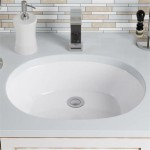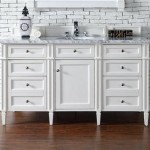Bathroom Vanity Toe Kick Dimensions
Bathroom vanities, essential fixtures in any bathroom, combine functionality and aesthetics. A crucial, often overlooked, aspect of their design is the toe kick. This recessed space at the bottom of the vanity provides foot space, allowing users to stand closer to the sink for comfortable use. Understanding toe kick dimensions is essential for both practical comfort and achieving a cohesive bathroom design.
Standard toe kick dimensions typically range from 3 inches high and 2.5 to 4 inches deep. This depth provides adequate foot space without compromising cabinet storage. While these measurements are common, variations can exist depending on specific vanity designs and manufacturer preferences. Custom vanities, in particular, may feature toe kicks outside these standard dimensions.
The height of the toe kick plays a significant role in user comfort. A toe kick that is too short can feel restrictive and uncomfortable, while one that is too tall can reduce storage space within the vanity. The standard 3-inch height is generally considered ergonomic for most individuals, allowing comfortable standing and leaning against the vanity during use.
Depth, like height, impacts both comfort and practicality. A shallower toe kick, around 2.5 inches, provides minimal foot space but maximizes cabinet storage. A deeper toe kick, closer to 4 inches, enhances comfort but reduces internal cabinet volume. The choice between these depths often depends on individual preferences and the overall bathroom layout.
Several factors influence the selection of toe kick dimensions. Existing plumbing lines can restrict the available space for the toe kick, particularly its depth. Floor unevenness may necessitate adjustments to ensure the vanity sits level and stable, potentially impacting toe kick height. Furthermore, the overall design aesthetic of the bathroom and the vanity style itself can influence dimensional choices. A modern, minimalist vanity might feature a shallower, more discreet toe kick, while a traditional vanity might incorporate a deeper, more prominent one.
When planning a bathroom renovation or selecting a new vanity, carefully consider the toe kick dimensions. Measure the existing space accurately, taking into account any plumbing or structural limitations. Consider the needs of all users, factoring in height variations and accessibility requirements. Consulting with a qualified contractor or designer can provide valuable insights and ensure appropriate toe kick dimensions are implemented.
Beyond standard rectangular toe kicks, some vanities incorporate variations in design. Curved or angled toe kicks can add a unique aesthetic element, while recessed toe kicks can provide additional foot space without increasing the overall vanity footprint. These variations, while aesthetically appealing, must still adhere to ergonomic principles for comfortable use.
Toe kick material selection also plays a role in the overall aesthetic and durability of the vanity. Common materials include wood, which can be painted or stained to match the vanity, and plastic or PVC, which offer moisture resistance and easy cleaning. Metal toe kicks, often stainless steel or aluminum, provide a sleek, modern look and excellent durability. The chosen material should complement the vanity’s style and the overall bathroom design.
Proper installation of the toe kick is crucial for both functionality and aesthetics. It should be securely attached to the vanity base, ensuring stability and preventing movement. Seams and joints should be tight and flush to prevent moisture infiltration and maintain a clean appearance. Regular cleaning and maintenance will help preserve the toe kick’s appearance and prevent damage.
The seemingly minor detail of the bathroom vanity toe kick plays a significant role in both comfort and design. Careful consideration of its dimensions and material ensures a functional and aesthetically pleasing bathroom space. By understanding the standard dimensions and the factors influencing them, homeowners can make informed decisions that contribute to a well-designed and comfortable bathroom environment.
Accessibility is another important factor to consider when determining toe kick dimensions. For individuals with mobility limitations, a higher toe kick might present an obstacle. In such cases, adhering to accessibility guidelines and consulting with specialists is essential to ensure a safe and comfortable bathroom environment.
The toe kick, often overlooked, contributes significantly to the overall functionality and aesthetics of the bathroom vanity. Beyond merely providing foot space, it influences user comfort, storage capacity, and the overall design harmony of the bathroom. Understanding its dimensions and the factors influencing them allows for informed decisions, resulting in a practical and visually appealing bathroom space.

Standard Cabinet Dimensions

Bathroom Vanity Definitions What Is A Toe Space And Ki Wide Canvas

How To Make Cabinet Toe Kicks Stonehaven Life

Cabinet And Built In Building Basics Sawdust Girl

How To Make Cabinet Toe Kicks Stonehaven Life

Svb 24 Tkd Gray Mist Vanity Sink Base Full Height With Toe Kick Drawer Cabinet Bathroom Cabinets

Diy Kitchen Cabinets Made From Only Plywood

Pin On Bathroom Designs

Dresser Style Vanity With Toe Kick Detail Design Ideas

Standard Toe Kick Dimensions For Cabinets Worst Room
Related Posts







